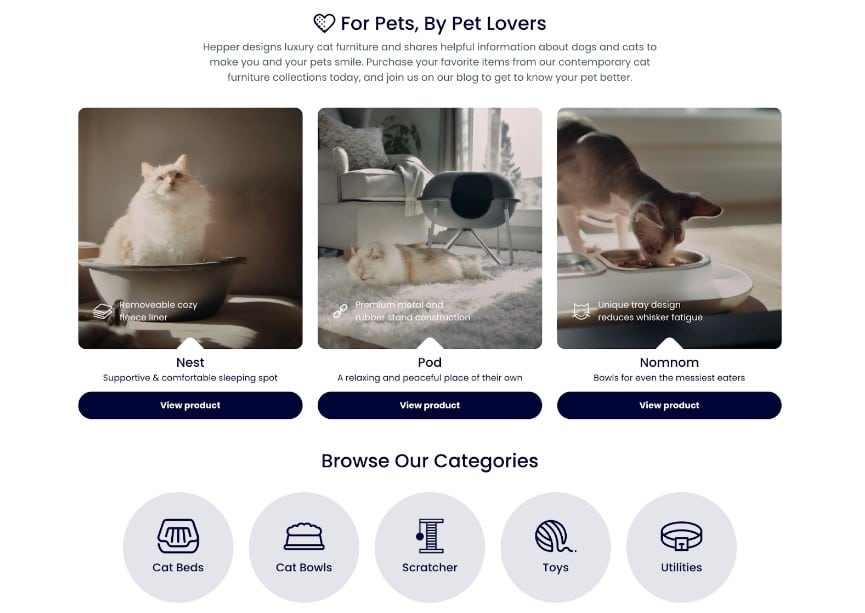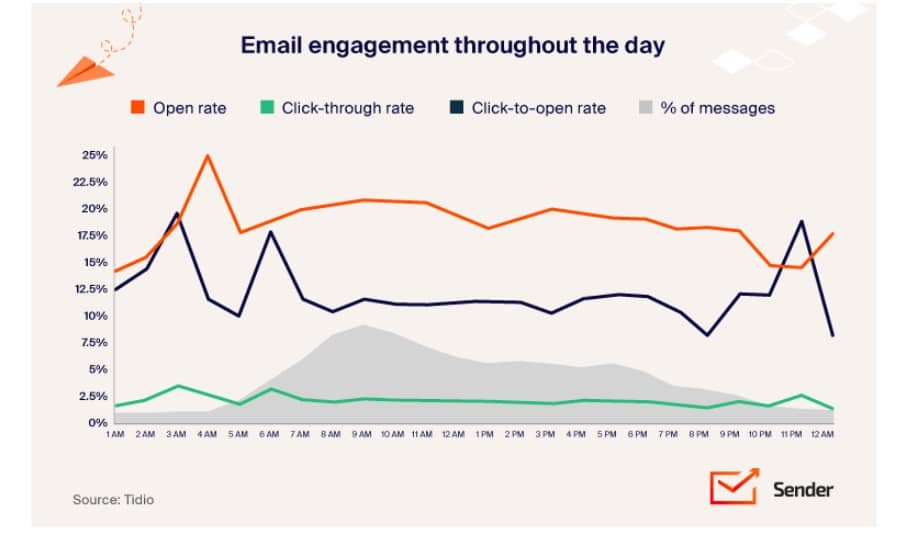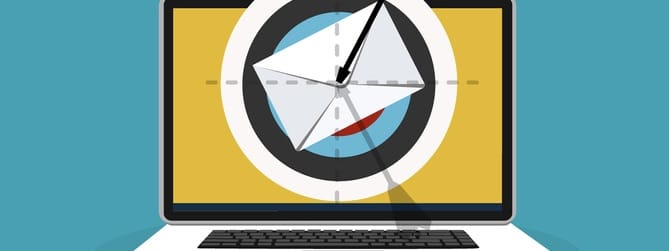Have you ever sent an email to realize you might’ve just confused the other person or, worse, sparked a massive misunderstanding? We’ve all been there, and we know the sting all too well.
No matter how much email creeps into our daily lives, it’s easy to overlook the nuances that can make or break an email.
So, what’s the secret sauce to crafting emails that get the job done without the drama? We’ll walk you through eight golden tips to help you create professional emails without wasting time. So, buckle up; your email game is about to level up.
1) Be clear and concise
In this world of distractions, less is often more—especially with emails.
Think about it. When you’re sifting through an avalanche of emails, don’t you appreciate the ones that get straight to the point? Clarity and brevity are your allies.
Get to your point quickly and efficiently—your recipient’s time is precious, and so is yours. Here’s how to keep your emails lean and potent:
- Edit ruthlessly: Avoid unnecessary words or phrases that don’t add to the conversation.
- Simple over complex: Use straightforward language that can be understood at a glance.
- One idea per paragraph: Keep your message organized and digestible by tackling one point at a time.
Remember to take a moment to cut the clutter before you hit send. Review your draft and ask yourself: Can this be said more simply? Often, the answer is a resounding yes.
Trim the excess until what you’re left with is crisp, clear, and cannot be misunderstood. That’s the mark of a pro.
2) Use a clear subject line
Think of your subject line as your headline, first pitch, and virtual handshake. It’s a window into the story you’re telling.
With 69 percent of people tagging emails as spam based on the subject line alone and 64 percent deciding to click open based on its allure, it’s clear your few words upfront pack a punch.
Writing a clear subject line is not just about avoiding the spam folder; it’s about inviting a click, a read, and, ideally, a response. Here are some tips:
- Be precise: Tailor the subject line to reflect the core message of your email.
- Spark curiosity: Use dynamic language that piques interest without being clickbaity.
- Personalize when possible: Address the recipient’s interests or pain points or their name to increase relevance.
Subject lines are the golden keys that unlock attention. So, make them catchy, relevant, and irresistible. Here are a few examples of attention-grabbing subject lines:
- We saw you checking us out. 😏
- [First name], Are you making these mistakes?
- Did you forget something, [first name]?
- I bet you didn’t check this out.
- Limited-time discount for [first name]. Grab now.
Remember, a clear, compelling subject line is not just another element in your email —it’s your first pitch. Make it count.
3) Use an active voice
The choice between active and passive voice can make a world of difference in a professional setting.
Passive communication might sound formal, but it often muddles the message and leaves room for confusion. On the other hand, an active voice brings clarity and direction to your correspondence.
Take the following example of a sentence in a professional email.
- Passive voice: “The monthly marketing report is expected to be reviewed, and feedback should be shared before the next team meeting.”
- Active voice: “Please review the monthly marketing report and provide your feedback at the meeting on Wednesday.”
The passive voice example creates uncertainty about who is responsible for the action, whereas the active voice specifies the recipient’s obligation, providing clear direction and a deadline.
Here are some reasons why active voice should be your go-to:
- Directness over ambiguity: Active sentences clarify who is doing what, which is crucial in a professional setting, where actions and deadlines are tightly linked to outcomes.
- Brevity for impact: Active voice tends to create shorter, punchier sentences. This is a godsend when every second counts and every word is weighed for its impact.
- Professionalism with a personal touch: Active voice can be direct without being impersonal. It signals engagement and responsibility, traits that define professional ethos.
Remember, communication’s main goal is to inform, engage, and prompt an action. And often, the active voice is your best ally in achieving just that. In scenarios involving call center customer service, you must be careful between choosing an active or passive voice.
Active voice helps reduce confusion and fosters direct and engaging customer interactions. So, choosing an active voice can significantly enhance professionalism and promote call efficient operations.
4) Understand the recipient
For your email to land correctly, you need to understand your recipient, or in other words, you should be emotionally intelligent.
Emotional intelligence is the art of reading the room. It’s about crafting your message to connect genuinely with the reader’s feelings, striking a chord that resonates beyond words. Think of it as a long-term game to enhance your PR efforts.
Consider this sentence: “I expect your feedback on the presented designs by Thursday.”
The sentence sounds too commanding. Rather, you should write something like: “Your perspective on the designs could really shape the project’s direction. Could you share your thoughts by Thursday?”
This version not only solicits feedback but also emphasizes the value of the recipient’s unique perspective, which can foster a sense of importance and collaboration. This is not just an instruction; it’s an invitation that respects and reflects the recipient’s worth.
Here’s how to infuse emotional intelligence into your emails:
- Invitations over instructions: Frame requests as opportunities for contribution rather than mere tasks.
- Empathy in every exchange: Whether you’re addressing a complaint or asking for input, always acknowledge the recipient’s potential feelings.
- Positive language, positive responses: Choose words likely to elicit a positive emotional response, paving the way for fruitful interactions.
By integrating emotional intelligence into your email strategy, you build more than just a communication bridge—you build rapport and trust, which is essential for success in any professional setting.
5) Organize your thoughts
Before writing an email, gather your thoughts and have a goal in mind. This will help you type down an effective email with a clear structure.
McKinsey developed the Pyramid Principle in the 80s based on the same theory to define how to convey complex information. Here’s how it works:
Picture a pyramid first.


Source: McKinsey
Here’s an email example following the pyramid principle:
Minto Pyramid example

Source: Untools
The main idea sits at the top, followed by supporting arguments and data as you move down. This hierarchy helps you organize your thoughts clearly and guides your reader through your message logically.
You can use it to write emails by following these tips:
- Lead with your conclusion: Start with the core message or action you want the reader to take.
- Support with key details: Follow up with the necessary details to understand your conclusion or request.
- End with the background: Provide additional context supporting your main points.
By structuring your email communications with the Pyramid Principle, you’ll craft messages that are not only well-organized but also incredibly persuasive, essential for cutting through the inbox chatter.
6) Provide a clear takeaway or instruction at the end
A clear ending is like an email’s definite call-to-action (CTA). It is the signpost that guides your recipient on what to do next.
A well-crafted takeaway or instruction in your email removes the guesswork and moves the recipient toward the desired action. This is particularly crucial in a professional setting, where everything depends on how well an email request is addressed and responded to. Here’s how you can be clear in your instructions:
- Be specific: Instead of saying, “Let’s discuss,” say, “Please reply with a time next week for a call.”
- Highlight urgency when needed: Use phrases like “Please respond by the end of the day Thursday” to emphasize time-sensitive actions.
- Use action-oriented language: Words like “register,” “download,” or “attend” clearly indicate the action required.
By incorporating unmistakable instructions, your emails will not only command attention but will also drive the momentum for your PR initiatives or otherwise.
7) Pick the best time to send your email
Timing isn’t just a detail; it’s a crucial element for the success of email communications.
Send an email too early, and it might get buried under a pile of messages. Too late, and the recipient might miss it entirely. According to data, the best time to send a B2B email is between 5:00 am & 7:00 am.
Here’s some data about email engagement:

Source: Sender
If you want to appear professional, master your timing just as the message. Here’s what you can do:
- Understand your audience: Are they early risers or night owls? When are they most likely to engage?
- Leverage analytics: Use email analytics to determine when your past emails have had the best open rates.
- Consider time zones: If you’re working across time zones, aim for a window that maximizes visibility in all relevant regions.
Choosing the optimal time to send your emails can dramatically increase their chances of being read and acted upon.
8) Include a closing line
The sign-off is more than a mere formality; it’s the final note that echoes in the recipient’s mind. A thoughtful closing line can continue the conversation and pave the way for future interactions. Here’s what you should add:
- Express gratitude: “Thank you for considering our pitch; your feedback is invaluable.”
- Encourage dialogue: “What are your initial thoughts? I’d love to hear them.”
- Offer assistance: “I’m here to help with any questions—feel free to reach out.”
A closing line is your chance to leave a positive, lasting impression, ensuring your email isn’t just read but remembered. So, never leave that opportunity on the table.
Wrapping up
There you have it—eight power moves to turn your email communication into a professional tool that solicits a response. By embracing these tips, you’ll sharpen your messages and enhance your professional relationships.
For the PR world, these tips are not just suggestions; they’re necessities for thriving in a landscape where every email counts. These practices will help you craft email marketing campaigns that resonate well and build deeper connections.
So, as you draft your next email, remember every word, every sentence, your subject line, and the correct timing is an opportunity to showcase your expertise and drive the PR narrative forward. Here’s to your success in the inbox battlefield, where clarity wins, and relationships grow—one well-crafted email at a time. All the best!




